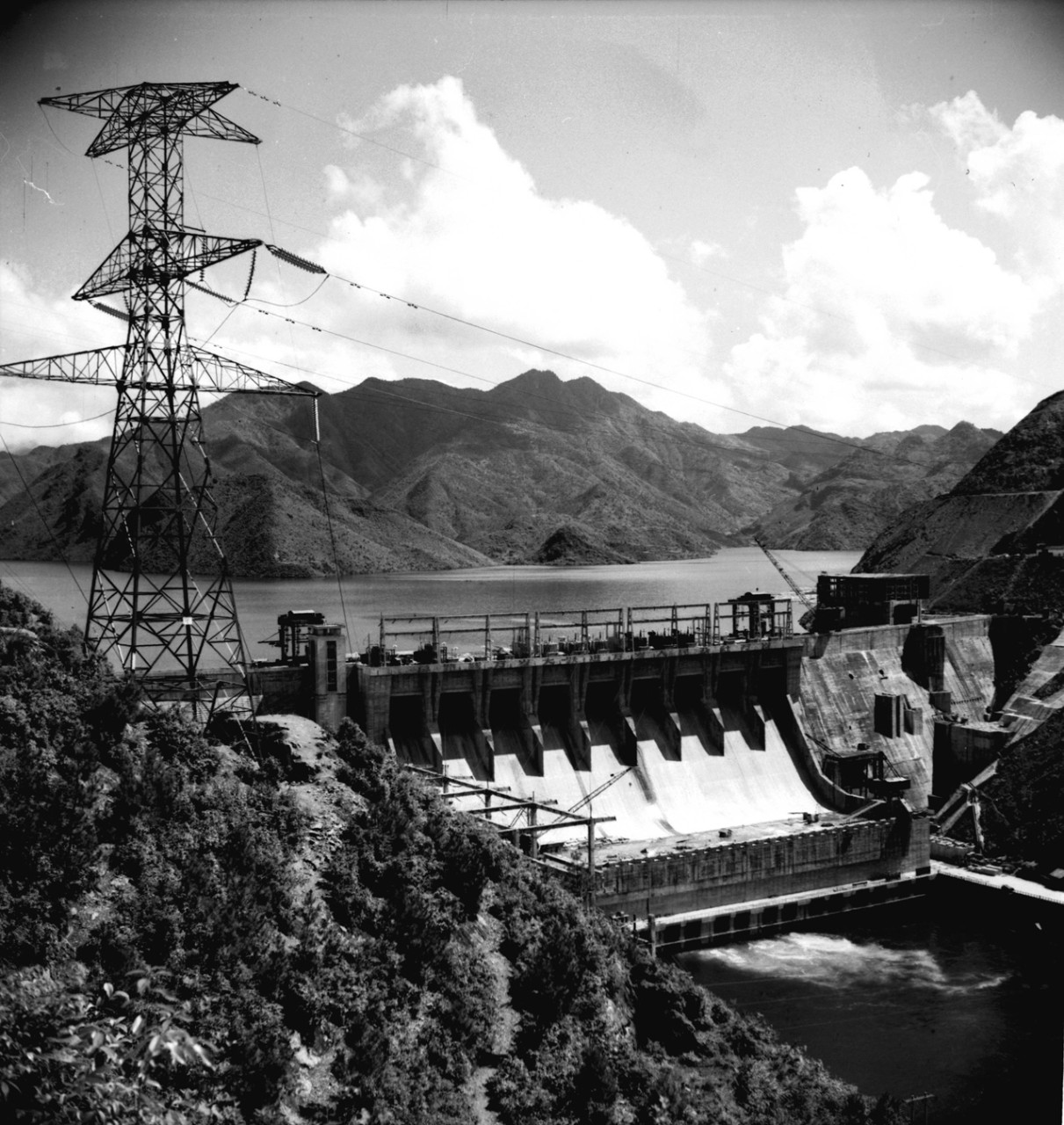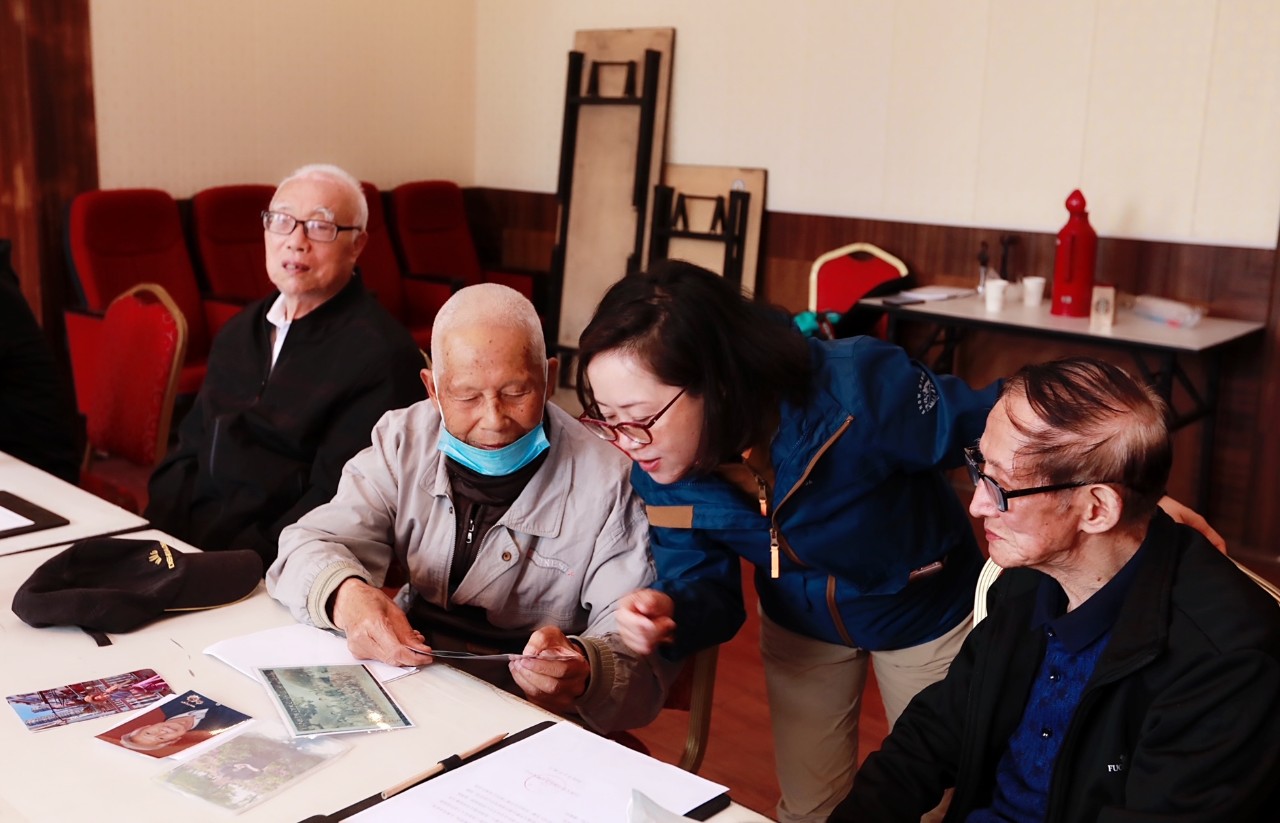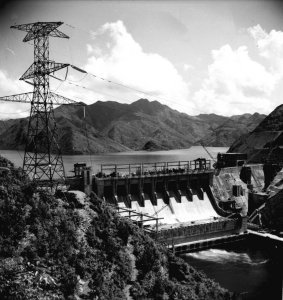Collaboration explores the possibility of equitable building of dams in China
by Stephanie M. McPherson
What do a medieval historian and geomorphologist have in common? A lot, it turns out.
Ling Zhang, Associate Professor of History, and Noah Snyder, Professor and Department Chair of Earth and Environmental Sciences, both study water and how it has been affected by environmental changes throughout history. And these two water scholars have come together for work on hydropower in 20 th century China funded by a Schiller Institute Grant for Exploratory Collaborative Scholarship (SIGECS).
“We tend to believe hydropower is clean, is renewable, is good,” says Zhang. “But hydropower has its own problems. Not only technological, but political, socioeconomic.”
SIGECS grants support interdisciplinary exploration between faculty of different specialties. Zhang and Snyder have been aware of each other’s interests in water and hydropower for years. Their SIGECS grant, awarded for FY22, supported a more formalized collaboration. The two met monthly for a year to discuss Zhang’s research on a book about hydropower in mid-century China and Snyder’s work on hydroelectricity use around the world.
“It was a highlight of my month to have an hour and a half where my calendar was set aside to have an intellectual conversation with a really smart person who looks at rivers from a very different perspective than I do,” says Snyder. “The SIGECS grant justified that space on my calendar.”
Zhang and Snyder would assign one another readings, share their writing, discuss new areas of research, and help each other see the issue from a different perspective.
“Noah helped me become more scientifically literate and I helped him learn how to think like a historian, what we humanities scholars do, what we care about,” says Zhang.
The grant also supported Zhang’s travel to and work in China, for critical research for this personally meaningful project.
“I'm born and raised in China, my family is still back in China,” says Zhang. “And five years ago my mother was diagnosed with Alzheimer’s. But as she was losing memory, she would repeatedly go back to reflect on the moment she dressed up in a military uniform and went to an island at age of 17. She thought she was to join the Chinese navy, to officially become a soldier.”
Instead, Zhang’s mother was forced to do hard manual labor, clearing the island of trees and wildlife. Zhang had trained as a medieval historian, but she had always been interested in writing a memoir involving the Cultural Revolution that took place during her parents’ generation. This clearly powerful memory of her mother’s seemed like it could be a good starting point.

Photo of the then newly built Xin'anjiang Hydroelectric Station (photographed in 1965, from a private collection)
But in researching the island, Zhang found an entirely different story. She learned that the lake surrounding the island was in fact a reservoir that had been formed when a mountainous area, previously home to villages and towns, was flooded during the building of a hydropower dam.“
At the bottom of the reservoir there used to be habitats, settlements, villages, and towns which in historical times produced vibrant human societies. So many different species had made this place their home. And yet they all disappeared, were drowned,” she said. “I realized that there’s something bigger here that has been forgotten.”
Thanks in part to the support of the Schiller grant, she took a one-year sabbatical. During this time, she researched the subject and, with the help of Snyder, educated herself on the technological aspects of hydropower dams. While in China, the SIGECS money funded her travel through the country and allowed her to purchase media—like geological survey data, books on the dam’s construction, and even films produced at the dam site—that will help her tell the full story of hydropower’s effect on the landscape of China and its people.“

Ling Zhang interviewing workers who participated in the construction of the hydroelectric station in the late 50s and early 60s (taken in April 2022)
I talked to people who lived at that time on both sides of the story: those who built the dam and those who had to migrate and suffered from the construction of the dam. I talked to children of those immigrants and workers and learned how they went through that period as children. And I talked to a younger generation who live in this totally transformed ecological system, learning how they try to make sense of the history, how they understand the transformation of their ancestral land, and how they try to build a relation with that loss,” says Zhang.While in China she had to contend with strict Covid regulations and concerns.“
I was hyperconscious about Covid. I interviewed many people who are 89, 90, 91 years old. They really wanted to meet me and talk to me, but I worried about bringing Covid to them,” she said.
There was also a sense that many people in official places were wary of talking to her about this sensitive issue of human displacement. She was turned away from certain archives and forced to delete some images and documents she had gathered.Zhang’s powerful urge to tell this story of environmental upheaval buoyed her through these challenges.“
As an environmental scholar, I believe we haven’t done enough intellectually to understand the environmental problems we’re facing both at the global scale and at a regional level,” she says.
And because these issues are complex and multidisciplinary, initiatives like the Schiller Institute are key to fostering the connections that will innovate solutions. Snyder and Zhang hope to continue their collaboration through writings, public conversations, and maybe even an interdisciplinary course in the future.“Schiller elevates the level of dialogue that we can have across the university,” says Snyder.“
The two of us have a good rapport now, and I think we can model an interdisciplinary conversation in a fun way that is pretty unusual in its presentation.”Both researchers appreciate the doors that Schiller and its programs like SIGECS have opened.“
For me as a medieval historian, because of Schiller, I got to talk about engineering and ecology in a non-apologetic way. I didn’t need to explain or question if I’m legitimate to do this,” says Zhang. “Scholars can and should be moved beyond our comfort zones to participate in interdisciplinary conversations.”



